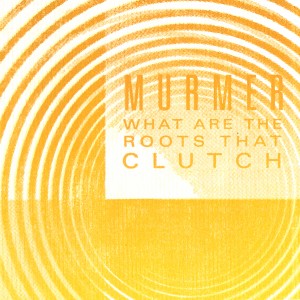[ezcol_1half]the great helen scarsdale agency has now officially announced the release of the first new solo murmer full length abum since 2007, what are the roots that clutch. from the agency’s announcement:
Hello and welcome to yet another public service announcement from the Helen Scarsdale Agency.
A few months have passed since we’ve published anything, and that was due to a consolidation of the fabrication departments of the Agency under one roof. The sound and design studios were separated from the printing and corrosion services by a sizable body of water and one very long bridge; but now all is housed in one complex — not entirely organized to our satisfaction, but good enough for us to begin soliciting sales for the latest publication — a mesmerizing album of field recording and hallowed minimalism from Patrick McGingley (aka Murmer). This is the second of McGingley’s albums that we have been blessed to release into the world, and it’s quite a gem. We won’t be issuing this for a few weeks — July 3, in fact; but we are now accepting pre-orders on the album for those so inclined. With just 400 in limited production, we hope you would be inclined.
And now, the details:
Murmer
What Are The Roots That Clutch
Helen Scarsdale : HMS022 : CD
mail order price : $13.00
release date: July 3, 2012
What Are The Roots That Clutch is limited to 400 copies and comes housed with letterpress artwork.[/ezcol_1half][ezcol_1half_end] [/ezcol_1half_end][ezcol_4fifth]It was a cavernous tone that broadcast from a ventilator duct that inspired Patrick McGinley to begin collecting field recordings and working them into his slow-arc compositions. At the time when he heard that particular tone in that particular city at that particular time, he had no gear to recording device on hand. Over the next fifteen years (and counting) McGinley has eased into a peripatetic lifestyle, wandering the European countryside and forests (but never straying too far from the thrum and spark of civilization) in search of the same epiphany with his head rattled to the sound of a cavernous air duct.
[/ezcol_1half_end][ezcol_4fifth]It was a cavernous tone that broadcast from a ventilator duct that inspired Patrick McGinley to begin collecting field recordings and working them into his slow-arc compositions. At the time when he heard that particular tone in that particular city at that particular time, he had no gear to recording device on hand. Over the next fifteen years (and counting) McGinley has eased into a peripatetic lifestyle, wandering the European countryside and forests (but never straying too far from the thrum and spark of civilization) in search of the same epiphany with his head rattled to the sound of a cavernous air duct.
Around 1996, McGinley adopted the moniker Murmer for his compositional work; and though his work often steps into the quieter realm of sound construction, much of his field recordings and resultant compositions privilege interference and disturbances that occur within any given sound ecology. Those sounds could be the elusive tone from that ventilator, the polyrhythmic chorus of chirping frogs, the abstracted roar from an Arctic wind tearing across the Black Sea, or the metallic skree from a bowed antenna perched atop a Soviet-era observatory. What Are The Roots That Clutch marks McGinley’s first full album in nearly 5 years, but it marks an elegant continuation of his previous album We Share A Shadow. The five chapters of this album can’t easily be associated with any specific location; instead McGinley overlaps and crosshatches his field recordings and abstractions into acousmatic passages with ghostly, half-melodic qualities. Even the two unprocessed recordings of the album are impossibly complex in their accretions of sound. McGinley’s composed pieces embrace lithe, mysterious drones whose mossy, damp atmosphere perfectly situate with tactile crunches, tactile events, and signal noise generation. Eels and leaches would not be out of place in such an environment; but the subaquatic murk snaps into a hallowed manifestation of ritualized minimalism at the album’s finale/ — one that LaMonte Young and Angus Maclise might have conjured in 1968 with clattering percussive elements and a hypnotic blur of harmonic drone.[/ezcol_4fifth]